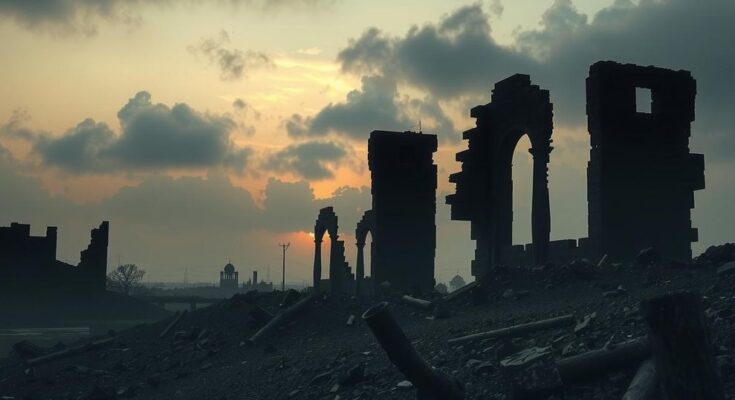The Syrian military, with Russian support, commenced airstrikes against Islamist rebels following the latter’s capture of Aleppo, reigniting the civil war. This shift marks the first time rebels controlled the city since 2016, leading to further advances. The conflict’s complexities are heightened by foreign interventions and shifting alliances, with no current peace process in sight.
The Syrian military, supported by Russia, launched air strikes targeting areas taken by Islamist rebels, following a surprise offensive that expelled government forces from Aleppo. This recent shift in control has reignited the civil war, creating a new front that risks involving both Russia and Turkey in an escalating conflict.
On November 26, the rebel forces began their unexpected military push, advancing from the north and northwest of Aleppo. By November 29-30, they succeeded in entering the city, marking the first change in its control since 2016. The rebels have since made significant gains south and southwest of Aleppo, capturing additional territory in Hama province.
In response, the Syrian government has pledged to retaliate, while Russia has intensified its airstrikes in support of the Assad regime. This development is seen as the most severe escalation in the conflict for years. Since the war began in 2011, it has resulted in hundreds of thousands of fatalities and displacement of more than half of Syria’s pre-war population of 23 million.
The major insurgent group involved in this offensive is Hayat Tahrir al-Sham (HTS), previously known as the Nusra Front, which severed ties with al Qaeda in 2016. Under the leadership of Abu Mohammed al-Golani, HTS has emerged as a dominant force in Idlib, despite losing ground elsewhere. However, it is labeled a terrorist organization by the United States, Russia, and Turkey.
Another rebel faction has simultaneously launched an offensive from northern Aleppo, backed by Turkey. These elements are organized under the Syrian National Army banner, indicative of the complexities and alliances in the current conflict.
The resurgence of hostilities is attributed to the changing dynamics among regional powers after years of stagnation. While the Syrian conflict has been long-standing and characterized by territorial divides, recent escalations involve multiple nations’ interests, particularly due to the ongoing conflicts with Iranian-backed forces and Israel. U.S. National Security Advisor Jake Sullivan highlighted that these circumstances have provided the rebels an opportunity to capitalize on the distraction of the Syrian government’s allies.
The Syrian Civil War, which erupted from an uprising against President Bashar al-Assad’s rule in 2011, has resulted in a prolonged humanitarian crisis and significant geopolitical complications. Various foreign powers have intervened, with Russia and Iran supporting the Assad regime, while the U.S. has backed Kurdish forces in the northeast. Turkey, meanwhile, has a vested interest in the outcomes in northwest Syria. The conflict has seen shifts in control over key cities like Aleppo, which had remained a focal point in the war. The dynamics of power in the region remain fluid, influenced by ongoing international tensions, such as the conflict between Israel and Iran.
The recent capture of Aleppo by rebel forces represents a dramatic shift in the Syrian Civil War, marking the most significant escalation in years. With various international players involved, the landscape remains complex and volatile. As new alliances form and old conflicts resurface, the prospects for peace remain dim, while humanitarian concerns persist. The situation calls for renewed diplomatic efforts, but implementation of any resolutions remains stalled.
Original Source: www.france24.com




